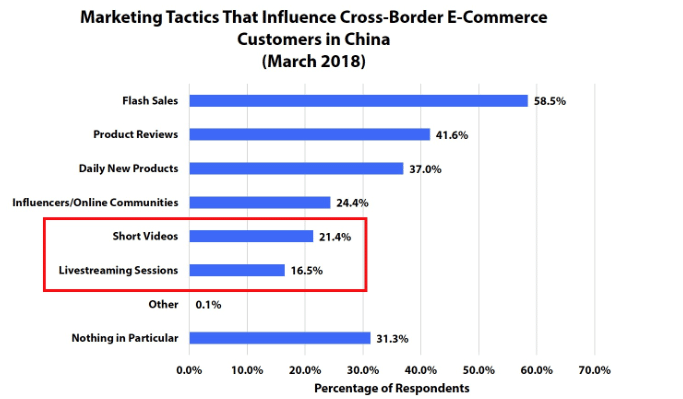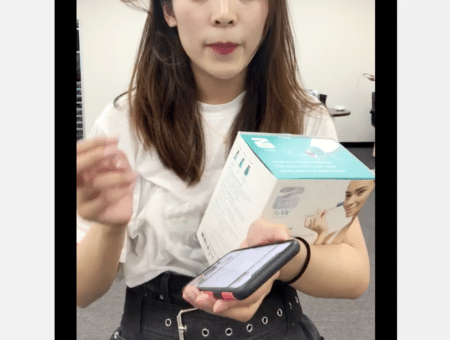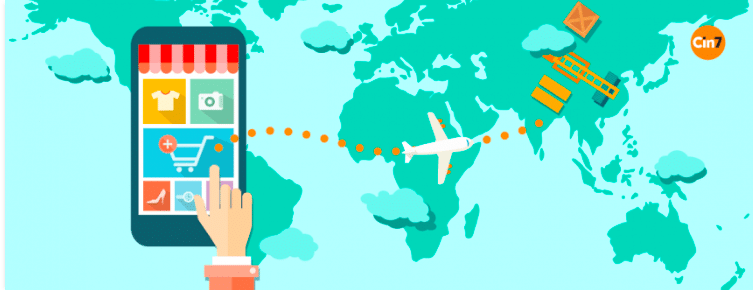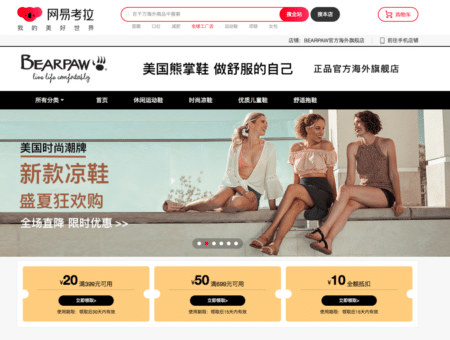If you represent a top 100 brand you may not have much interest in this post, but if your brand is new to cross border e-commerce and not well established in China, it might be useful to review the basic elements of demand creation on cross border e-commerce. Long hailed as the best introductory platform for new products in China, cross border e-commerce revenue continues to dazzle even the strongest skeptics. In 2018 alone, revenue from cross border e-commerce sales in China exceeded $200 billion dollars and projections suggest cross border turnover will exceed $250 billion dollars by 2021.
Now I present the sobering facts: the minimum outlay to get started with a flagship store- brand specific online store on the leading cross border e-commerce platforms- is no less than $100,000 dollars! Yes, the costs of going it alone are considerable. A very simple breakdown of front-end costs is provided below:
- Deposit to e-commerce platform (Tmall, JD.com, Kaola.com)- $15,000-$25,000
- TP* Fee- $5,000-$10,000 per month (Alibaba requires store owners to use only approved TP’s)
*TP or Third Party set-up and manage your online store on a day-to-day basis and provide brand development guidance and execution support. It should be noted that promotion of the brand through social media, KOL’s, live streaming, and other methods is not included in the TP monthly fee. - Customer Service- The leading cross border platforms require store owners to provide no less than 12 hours of dedicated online store support per day. $500.00-$1000.00 per month
- Dedicated staff to support TP team (bilingual Chinese/English Speaker) and being interface between foreign brand owner and cross border e-commerce platforms in China. $25,000 + annually
You will notice that I have not included marketing costs above. Unfortunately, the fee schedule listed above is just to get a brand onboarded and ready for sales via cross border e-commerce. To be fair, your TP team will be systematically developing your brand profile through Search Engine Optimization (SEO), indexing of SKU listings on your chosen e-commerce platforms. While this step is essential, particularly if your brand is new to China, it likely it will not be enough to generate tangible sales. Having recently launched a major US apparel brand’s flagship e-commerce store in China, we were rudely awakened by how much the landscape in cross border has changed in just the past twelve months.
A few years ago the major cross border platforms were desperately seeking foreign brands to enhance their product mix and reputation. Once launched, these brands started to see a steady stream of sales. Many brands launched around big promotion events like Singles Day (11.11) and would easily recoup their front-end investments within a matter of months, even weeks.
What has changed?
 In the formative days of cross border e-commerce, Chinese consumers had few foreign brand choices so just being online was sufficient to drive sales. Today the major cross border e-commerce platforms are saturated with foreign brands and this coincides with a precipitous drop in native platform traffic a store can expect just being hosted on a leading cross border platform. What’s more, brands selling on the major e-commerce platforms need to factor in product discounting (as much as 33%-50%!) required to participate and benefit from the major sales incentive days on Singles Day or 12/12.
In the formative days of cross border e-commerce, Chinese consumers had few foreign brand choices so just being online was sufficient to drive sales. Today the major cross border e-commerce platforms are saturated with foreign brands and this coincides with a precipitous drop in native platform traffic a store can expect just being hosted on a leading cross border platform. What’s more, brands selling on the major e-commerce platforms need to factor in product discounting (as much as 33%-50%!) required to participate and benefit from the major sales incentive days on Singles Day or 12/12.
How does a brand drive online sales traffic?
Social media fueled by personality influencers has dramatically impacted the way in which consumers learn and respond to new brand offerings. Effective strategies such as PPC or pay for click to elevate a brand exposure on e-commerce platforms is now far less effective than developing a robust social media presence in China with daily postings on essential social media in China including: Douyin, Weibo, Little Red Book, WeChat, and others. Messages from a social influencer or Key Opinion Leader(KOL) to their loyal followers can far outstrip the impact of even home page exposure on Tmall or Kaola.com While some KOL’s in China may command fees akin to Kylie Jenner, $$$, there are different strategies to tap influencers without breaking the bank.
One common strategy is to identify influencers within your brand’s vertical and provide a limited amount of free goods to suitable influencers in return for posting a review to their followers. Monthly fees to engage well established influencers can range anywhere 15,000 RMB per month ($2000) and can exceed 50,000 RMB per month ($7500) depending on the reach of the KOL. Foreign brands are also finding adopting active social media postings with the inclusion of video created on Douyin (China’s leading video sharing app.) highly effective tools for driving sales traffic.
Live Streaming is quickly becoming another effective tool for brands to reach their target online buyer audience, offering real-time experience and interface with brands. It is not a coincidence that TMall, JD.com, and Kaola.com are actively boosting live streaming capabilities within their platforms to drive traffic and sales. Brands launching through cross border e-commerce will need to consider how they can incorporate live streaming into their marketing activities and align with ongoing social media promotion in China.

WeChat Commerce Gaining Traction
If you are not already confused, I also need to disclose the biggest pool of prospective online consumers in China actually resides outside the mega cross border e-commerce platforms and on WeChat, China’s dominant instant messaging service. WeChat has a unique ecosystem, and this allows store sellers to manage content, design, pricing in a much more flexible fashion that the traditional cross border platforms.
In fact, 40% of online shoppers will make unplanned purchases or significantly larger purchases after viewing information about a brand from its official WeChat account. Be aware, however, that WeChat is also facing the same competition dilemma impacting sales turnover on the leading cross border platforms. The truth is companies will also need to develop nimble strategies to drive traffic to their WeChat store through paid advertising and social media.
ABC Showcase Brand Development Solution
Understanding the challenges and high costs associated with launching brands onto cross border e-commerce in China, ABC Showcase is unveiling our new cross border brand incubator program. The program includes the following features:
- Onboard up to 5 product SKU’s on ABC Showcase Pop Store(Kaola.com) including: facilitating China Custom Approval, preparing online store listings with image and translation; recommending RMB selling prices, and managing all aspects of order logistics, customer service, and payment.
- Feature product on a live streaming event hosted by ABC Showcase on Kaola.com
- Include a product listing and brand description on ABC Showcase WeChat Store
Special Introductory Program Fee of: $1,000.00
Latest News/ View All
Showcase USA Store
The one stop solution to launching your E-commerce brand in China






